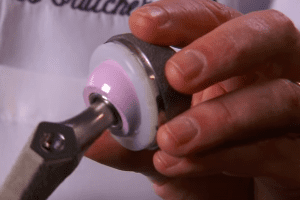
Gives physicians a better look at potential tissue and organ damage. GE Healthcare is using new MRI technology GE Healthcare is using new MRI technology that gives physicians a better look at potential tissue and organ damage caused by a defective metal on metal hip implants. According to a MedGadget.com report this week, GE […]

GE Healthcare is using new MRI technology GE Healthcare is using new MRI technology that gives physicians a better look at potential tissue and organ damage caused by a defective metal on metal hip implants.
According to a MedGadget.com report this week, GE introduced the MAVRIC SL. The new imaging technique “helps reduce artifacts caused by the presence of metal in both in-plane and through-plane dimensions compared to conventional MRI techniques.” Current MRI techniques do not allow a physician to see the potential damage caused to soft tissue surrounding the hip joint because the metal distorts that area on the image.
The MAVRIC SL works with the GE 1.5 and 3.0T MRI systems, according to MedGadget.com and was approved for use by the U.S. Food and Drug Administration (FDA) in December 2012.
We reported recently that a new study found that MRIs could help doctors detect potential damage caused by a metal-on-metal hip implant prior to the onset of more serious complications. Early detection of tissue damage through the use of an MRI could help people fitted with a metal-on-metal hip implant decide upon a corrective or revision surgery before the implant is able to cause more damage.
As we’ve been reporting, metal-on-metal hip implants have been linked with numerous complications for thousands of people worldwide. In fact, there are more than 10,000 lawsuits pending against DePuy Orthopaedics, a subsidiary of Johnson & Johnson, over its recalled ASR XL metal-on-metal hip implant. The company faces several thousand more lawsuits over defects allegedly caused by its Pinnacle metal-on-metal hip implant model.
People who’ve experienced trouble after receiving their metal-on-metal hip implant have suffered severe pain, limited mobility, and sometimes even a squeak or pop from their hip implant. In many cases, the complications begin just a few months or years after the patient receives the implant but long before the implant was supposed to be replaced.
As metal particles shed from the component pieces of the metal-on-metal hip implant, they are likely to cause soft tissue and organ damage surrounding the implant. If this goes unnoticed, the accumulation of the metals cobalt and chromium could be toxic, leading to a condition known as metallosis, according to our previous reports.
The new technology for MRIs being employed by GE could help detect that tissue damage early and possibly prevent further damage.
The personal injury attorneys at Parker Waichman offer free, no-obligation case evaluations. For more information, fill out our online form or call 1-800-YOURLAWYER (1-800-968-7529).


